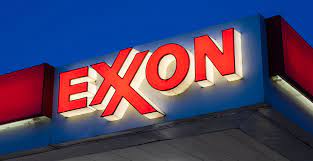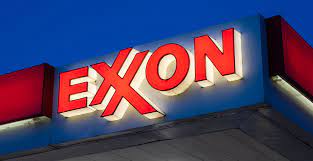
Exxon Mobil Corp announced a $56 billion net profit for 2022, earning about $6.3 million per hour last year. The numbers not only set a record for the company but also a historic high point for the Western oil industry. Global oil companies are anticipated to break their own annual records as a result of high prices and soaring demand, bringing their total take to close to $200 billion. The scale has reignited criticism of the oil industry, prompting calls for more countries to levy windfall profit taxes on the companies.
Exxon's earnings far exceeded the then-record $45.2 billion net profit it reported in 2008, when oil hit $142 per barrel, 30% higher than the previous year's average price. During the pandemic, deep cost cuts boosted earnings last year.
"Overall earnings and cash flow were up pretty significantly year on year," Exxon Chief Financial Officer Kathryn Mikells told Reuters. "So that came really from a combination of strong markets, strong throughput, strong production, and really good cost control."
Exxon said it lost $1.3 billion in fourth-quarter earnings due to a European Union windfall tax that went into effect in the fourth quarter, as well as asset impairments. The company is suing the EU, claiming that the levy goes beyond the EU's legal authority.
Profit for the full year, excluding charges, was $59.1 billion. Over a year ago, production increased by about 100,000 barrels of oil and gas per day to 3.8 million bpd. According to Refinitiv data, adjusted per-share profit of $3.40 beat the consensus of $3.29 per share.
The stock was up nearly 2% at $115.63.
"It’s a headline beat," Biraj Borkhataria from RBC Capital said in a note, despite lower chemical margins, lower-than- expected downstream gains and plans for higher maintenance works in refineries this quarter.
The outcomes set up another clash with the White House. Companies could increase output, but instead chose to "plow those profits into padding the pockets of executives and shareholders," according to a White House statement.
Exxon paid out $30 billion in cash to shareholders last year, the most of any Western competitor, and invested $22.7 billion in the business.
Windfall profit taxes, on the other hand, are "illegal and bad policy," according to Mikells. Increasing taxes on oil profits "has the opposite effect of what you're trying to achieve," she says, adding that it would discourage new oil and gas production.
Exxon claimed that its cash flow from operations increased to $76.8 billion in 2018, up from $48.1 billion in 2021. It also decided to keep $30 billion in cash on hand. The company said it learned from the pandemic, when it was left with nothing and had to raise debt to pay dividends to shareholders.
"Having a really strong balance sheet is a competitive advantage for us," Mikells said, adding that it allows the company to wait for potential acquisition opportunities and sustain its dividend program intact even if energy prices eventually fall.
Exxon posted a $12.8 billion net profit excluding charges in the fourth quarter, up 44% from the same period last year but down 35% from the previous quarter as oil prices fell and some operations suffered from cold-weather outages.
Exxon spent $22.7 billion on new oil and gas projects last year, up 37% from the previous year. The company increased its investments in Guyana, the top U.S. shale field, fuel refining, and chemicals.
"The counter-cyclical investments we made before and during the pandemic provided the energy and products people needed as economies began recovering," Exxon Chief Executive Officer Darren Woods said in a statement.
According to Woods, investments could reach $25 billion this year. Part of it is explained by rising Permian costs, with double-digit inflation and "really, really hot" demand for equipment and services, he said.
Exxon forecasts Permian production of 600,000 bpd this year, up 50,000 bpd from last year but slightly below market expectations. Woods, on the other hand, predicted that strong refining margins would continue in 2023.
Exxon's results come ahead of expected strong earnings from Shell plc on Thursday and BP plc and TotalEnergies the following week.
(Source:www.rte.ie)
Exxon's earnings far exceeded the then-record $45.2 billion net profit it reported in 2008, when oil hit $142 per barrel, 30% higher than the previous year's average price. During the pandemic, deep cost cuts boosted earnings last year.
"Overall earnings and cash flow were up pretty significantly year on year," Exxon Chief Financial Officer Kathryn Mikells told Reuters. "So that came really from a combination of strong markets, strong throughput, strong production, and really good cost control."
Exxon said it lost $1.3 billion in fourth-quarter earnings due to a European Union windfall tax that went into effect in the fourth quarter, as well as asset impairments. The company is suing the EU, claiming that the levy goes beyond the EU's legal authority.
Profit for the full year, excluding charges, was $59.1 billion. Over a year ago, production increased by about 100,000 barrels of oil and gas per day to 3.8 million bpd. According to Refinitiv data, adjusted per-share profit of $3.40 beat the consensus of $3.29 per share.
The stock was up nearly 2% at $115.63.
"It’s a headline beat," Biraj Borkhataria from RBC Capital said in a note, despite lower chemical margins, lower-than- expected downstream gains and plans for higher maintenance works in refineries this quarter.
The outcomes set up another clash with the White House. Companies could increase output, but instead chose to "plow those profits into padding the pockets of executives and shareholders," according to a White House statement.
Exxon paid out $30 billion in cash to shareholders last year, the most of any Western competitor, and invested $22.7 billion in the business.
Windfall profit taxes, on the other hand, are "illegal and bad policy," according to Mikells. Increasing taxes on oil profits "has the opposite effect of what you're trying to achieve," she says, adding that it would discourage new oil and gas production.
Exxon claimed that its cash flow from operations increased to $76.8 billion in 2018, up from $48.1 billion in 2021. It also decided to keep $30 billion in cash on hand. The company said it learned from the pandemic, when it was left with nothing and had to raise debt to pay dividends to shareholders.
"Having a really strong balance sheet is a competitive advantage for us," Mikells said, adding that it allows the company to wait for potential acquisition opportunities and sustain its dividend program intact even if energy prices eventually fall.
Exxon posted a $12.8 billion net profit excluding charges in the fourth quarter, up 44% from the same period last year but down 35% from the previous quarter as oil prices fell and some operations suffered from cold-weather outages.
Exxon spent $22.7 billion on new oil and gas projects last year, up 37% from the previous year. The company increased its investments in Guyana, the top U.S. shale field, fuel refining, and chemicals.
"The counter-cyclical investments we made before and during the pandemic provided the energy and products people needed as economies began recovering," Exxon Chief Executive Officer Darren Woods said in a statement.
According to Woods, investments could reach $25 billion this year. Part of it is explained by rising Permian costs, with double-digit inflation and "really, really hot" demand for equipment and services, he said.
Exxon forecasts Permian production of 600,000 bpd this year, up 50,000 bpd from last year but slightly below market expectations. Woods, on the other hand, predicted that strong refining margins would continue in 2023.
Exxon's results come ahead of expected strong earnings from Shell plc on Thursday and BP plc and TotalEnergies the following week.
(Source:www.rte.ie)














